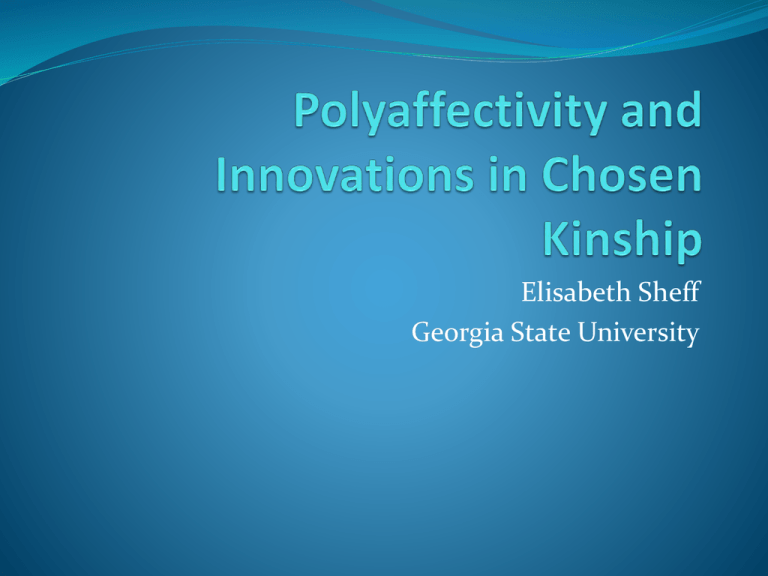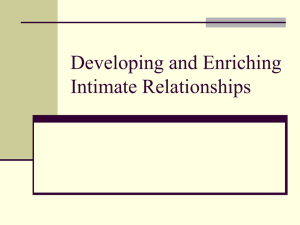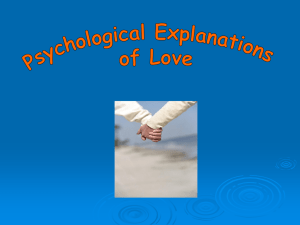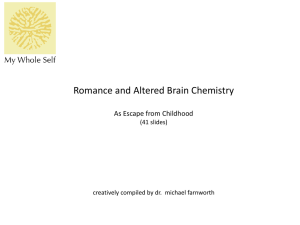
Elisabeth Sheff
Georgia State University
Polyamory
Openly conducted non-monogamous relationships
Focused on emotional intimacy, communication,
negotiation
Generally include a romantic or sexual element
Chosen Kinship
Evolved from fictive kin (Levi-Strauss)
Most broadly non-biolegal, emotionally and/or
romantically
Weston’s (1990) foundational study of chosen families
among lesbians and gay men set the stage for
LGBTQIP... family studies
Polyaffectivity
A form of chosen kinship
Non-sexual relationships among members of a poly
grouping
Characterized by emotional intimacy, companionship,
and reciprocal support
Differs from “regular” friendship in the level of
devotion and primacy of import
Types of Polyaffective Relationships
Between adults
Most commonly develop between people who share a
lover in common but are not lovers themselves
Siblingesque
Co-spousal, spice
Can also be ex-lovers, co-parents
Types Continued
Between children and adults
Most often develop among children and their parents’
partners
Commonly characterized as aunt/uncle, older sibling,
non-residential
Less commonly parental figure, then often coresidential
Research
Longitudinal ethnographic study of self-identified
polyamorists (1996 – present)
Three waves of data collection with 81 (6 children)
interview participants and 600 participants observed
Sample mostly white, middle-class, highly educated,
heterosexual men, hetero and bisexual women
Findings
These relationships take on familial level significance
for adults and kids
Some polyaffective relationships outlast the associated
romantic relationships
In some cases provide a more lasting connection than
the potentially more dramatic romantic liasons
Implications
Gender
Provides men with a unique opportunity to bond
cooperatively with other men
Families
Provides adults with additional resources, co-parents,
and assistance
Provides children with additional adult confidants and
support
Theoretical Implications
Polyaffectivity is ultimately the dethroning of sexual
connection as the arbiter of relational import. If sex is not
the singular, sacrosanct privilege of the nuclear couple and
instead becomes one option among many of ways in which
people can relate to each other, then it is no longer the
determining force in deciding if a non-consanguine
relationship is important or valid. As a consequence,
polyaffective relationships that do not include sex can still
be endowed with the same degree of importance as those
that do include sex; if the spouse is not the sole lover,
neither is that spouse necessarily the sole emotional or
practical significant other.
Policy Implications
These relationships are functionally important to
children and adults
Legal recognition provides access to benefits
Policy suggestions
Multiple parent adoption
Same-sex and multiple-partner marriage
Expand domestic partnership












